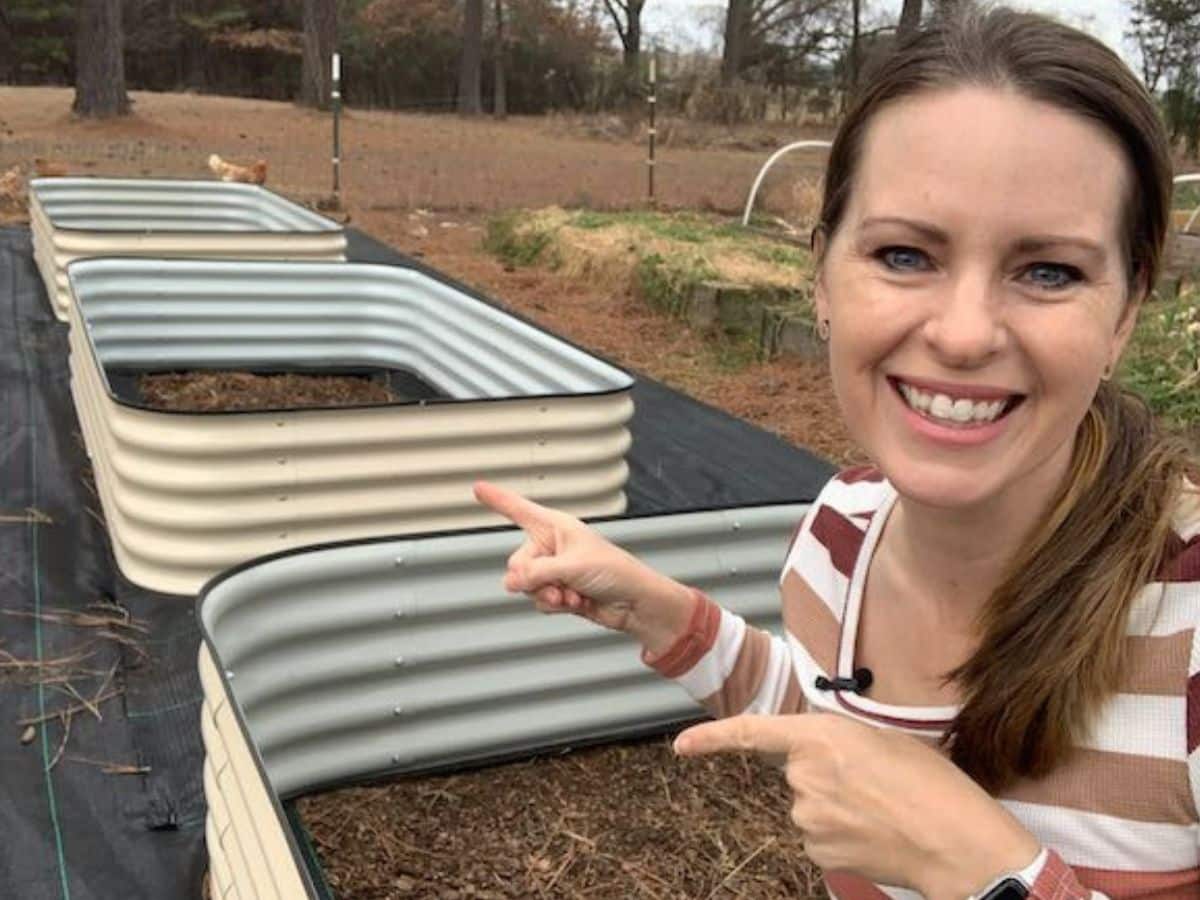How to Choose Quality Raised Bed Soil + Filling Techniques
Choosing the best quality raised bed soil is so important! If you learn nothing else today, understand that in order to have a flourishing raised bed, your soil is the most essential part to get right.
If this is your first time gardening in a raised bed, or if you are adding a new raised bed to your garden this year, then keep reading.
I’m going to share the exact steps I take when I’m filling my raised beds. Plus I’ll also share some mishaps I’ve had over the years and some of the lessons I’ve learned, too.
As a beginner gardener on a budget, I tried many methods to fill my raised beds and save money at the same time. Some of my methods worked and I still use them today, but some did not.
Now, I know the importance of getting quality raised bed soil mixed right the first time. If you don’t, your harvest won’t be nearly as bountiful and the soil foundation you lay now will affect your garden in the future as well.

Before we begin, if you’d like to watch a podcast episode instead about how to fill a raised bed, you can listen here:
Strategies For Choosing Quality Raised Bed Soil
Let’s go over how to choose quality rasied bed soil + some filling techniques with these topics:
- Importance of Quality Soil in Raised Beds
- Components of Quality Raised Bed Soil
- How to Select the Right Compost Soil
- Quality Raised Bed Soil Ratios and Recipes
- Depth of Raised Bed Soil and Shortcuts
- Importance of Proper Soil Preparation
Don’t forget to snag your 2024 Garden Planner now to help you on your journey to do some effective companion planting this year.
Importance of Qualilty Soil in Raised Beds
Your raised soil bed soil is alive. Literally! At least that is what you want. When you fill your raised bed with the right nutrients to begin with, your soil works with the plants to provide them with the nutrition and water they need.
Wondering what type of ingredients I’m talking about? As an organic gardener, you’ll want a mixture of living ingredients like bacteria, fungi, and other living organisms. These comprise your soil food web, and it’s many of these organisms that work with the plants’ roots to deliver the needed nutrition and water.
When you focus on building a “living” soil, you don’t have to rely on non-organic fertilizers ever (in fact, some studies show they may harm the soil life), and often you may not have to fertilize — even with extra organic inputs — at all!
Before I share a raised bed soil recipe, let’s first talk about the components of soil so you can understand what’s really inside good, nutrient-dense raised bed soil.
Components of Quality Raised Bed Soil
Quality raised bed soil has two main components:
- Topsoil
- Compost
Are you surprised that there are only two ingredients on the list? While this list seems short, it is the bare minimum that should be present in your raised bed soil.
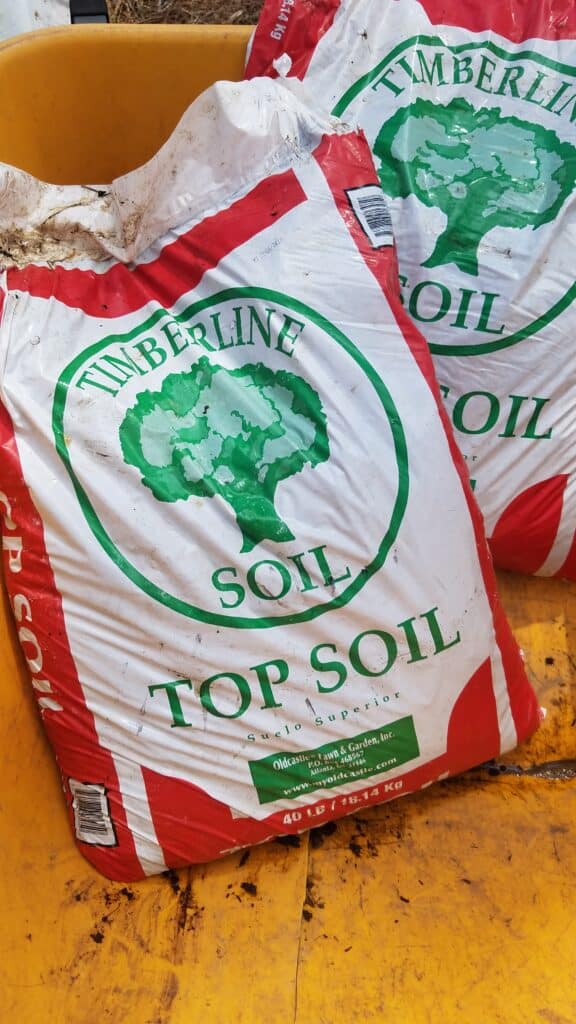
Topsoil is the soil that is found as the top layer in nature. It’s the 6-12” layer that is composed of rock, minerals, and some organic matter. Topsoil provides the structure and holds everything together.
You can dig up your own topsoil, or you can purchase bags from the garden store, or you can buy in bulk from your local landscaping company.
Compost is fully broken down or decayed organic matter. Compost is where the life is and where many of the nutrients are. This is where the magic happens in your garden. You can make your own compost, buy compost in bags, or buy in bulk as well.
While selecting the right compost sounds easy, it’s actually one of the most difficult decisions. Good compost is incredible, but bad compost — often tainted with harmful chemicals — can wreak havoc on your soil and plants.
How to Select The Right Compost Soil
Selecting the right soil ingredients can be tricky. If you use your own compost — a fabulous option — keep in mind that unless you master the art of hot composting, you’ll likely be dealing with seeds from your garden produce that may sprout, causing a weed problem. For this reason, I usually use my own compost toward the bottom of the raised beds. That way, those seeds won’t “see the light of day” and sprout.
If you lean towards buying bagged compost, make sure you are getting a high quality bagged compost. This can be tough. A lot of the cheap bagged compost is full of manure and a high amount of bark. You’ll want to find the best type of compost for your area. Ask for recommendations from a local gardener or local online facebook group.

My favorite compost is bulk compost I buy from my local landscaping company that I’ve tested and used for many years with great results. But buying in bulk isn’t always the best choice either. Sometimes, the bulk compost can be tainted with herbicides that can poison your garden. If you are buying from a nursery, often they can supply a report that will tell you what is inside the compost they are selling. If the nursery or landscape facility actually does test their compost, that’s a pretty good bet that they are proud of what they are selling and know it will do well in your garden.
Your best bet to find the highest quality compost soil in your area is simply to ask. Once you find your source, you’re set and ready to go!
Quality Raised Bed Ratios and Recipes
Once you have your compost and topsoil we can talk about quality raised bed soil ratios. I like to stick to this soil ratio of 50/50 – 50% topsoil and 50% compost. Other gardeners do it differently and you’ll want to decide what you are comfortable with.
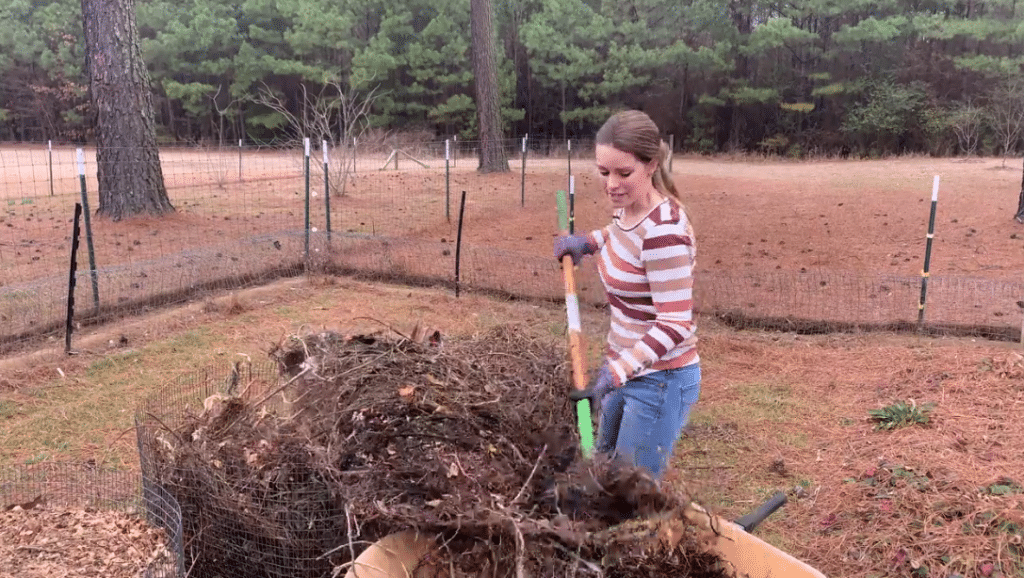
- Joe Lamp’l in his book The Vegetable Gardening Book, likes to use 50% topsoil, 30% compost, and 20% organic matter (like aged leaves and worm castings).
- Nicole Burke in her book Kitchen Garden Revival likes the ratio she calls 103 blend: 33% topsoil, 33% compost, 33% course sand, and 4% bonus material like worm castings and aged manure.
- Gary Pilarchik in his book, The Modern Homestead Garden, recommends 50% peat moss or coco coir and 50% garden soil mixed together. Then the top few inches of compost get worked into a depth of 6-12”.
- CaliKim in her book, The First Time Gardener Raised Bed Gardening, gives several different soil recipes based on what you want to buy or have available. One is a basic bagged mix, which may be helpful to you if you can’t buy in bulk. It’s 3 parts topsoil, 3 parts bagged compost or bagged garden soil with compost, 2 parts coco coir or peat moss, and 1 part vermiculite.
- Mel’s Mix that was made popular in Mel Bartholomew’s book Square Foot Gardening is our final option. This mix actually eliminates topsoil altogether and suggests 1/3 peat moss, 1/3 vermiculite, and 1/3 compost with as many sources of organic material as possible.
My purpose of sharing these recipes is for you to see that there are many options for soil and lots of different choices to approach how you fill your raised bed. As you can see, most of these recipes include a mixture of topsoil, compost and organic matter.
Depth of Raised Bed Soil and Shortcuts
Next, let’s talk about the depth of your raised bed soil. How deep does it need to go? Are there any shortcuts to avoid having to fill the whole bed? Let’s talk about each of these. There is one shortcut to filling your raised bed to consider. You can fill the bottom of your raised bed with less expensive organic matter and then add the expensive, high quality mix to the top.
The height of raised garden beds vary. If you use Birdies Garden Beds (*affiliate link) they offer heights of 15” for the short one and 30” for the tall one, but I have beds that are as short as 4″.
Depending on your plant, most plant roots will need between 6-12” of soil. For a 15″ raised garden bed you can fill it with approximately ⅓ organic material like straw, shredded leaves, sticks, prunings, pinecones, and logs.
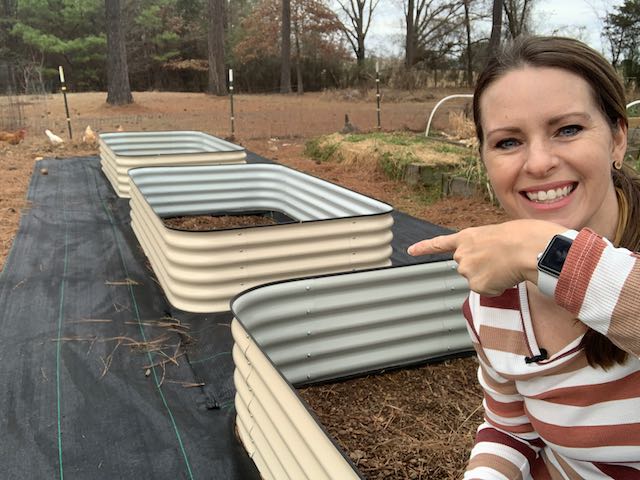
For the tall raised garden bed, you can fill it with 50% organic matter. You can add logs to the bottom for bulk and then add prunings and straw and then leaves to fill in the gaps and finally top it off with your soil — your compost and topsoil blend.
Beware of Dropping Soil Level
Keep in mind, by taking this shortcut and stacking organic matter at the bottom, you are saving on expensive soil costs, but your raised bed soil level will settle and drop over time. While you can’t prevent this, it’s best to water between each layer to help it settle before topping off the bed. You can also fill your bed a few weeks before you plant, if possible. When you do plant, make sure to add another layer of compost on top.
With each planting, you’ll “top off” the bed with more compost. This will keep nourishing the living soil in your raised beds, continually allowing it to thrive.
One thing to note: avoid planting perennials, perennial herbs, or strawberries in your raised garden beds filled this way because they will sink and be hard to deal with. These crops need a bed full of soil for best results.
If you want to see how I fill my raised beds, you can watch this video.
Importance of Proper Soil Preparation
The importance of selecting high-quality soil for your raised bed cannot be overstated. It’s the foundation upon which your garden thrives, providing essential nutrients and fostering a healthy environment for plant growth.
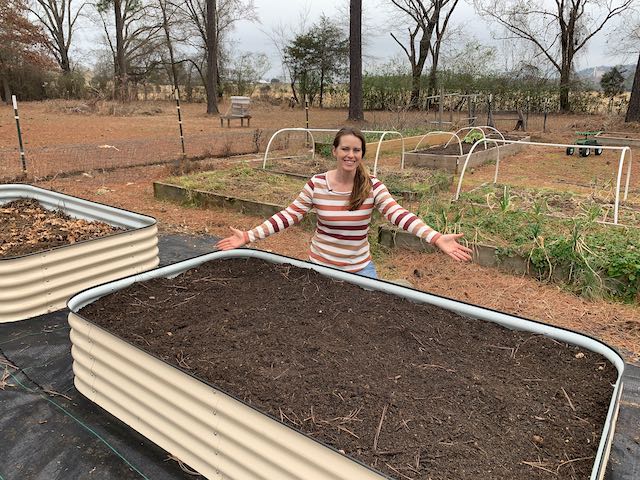
Whether you’re a beginner or seasoned gardener, taking the time to choose the right soil and employing effective filling techniques will set you up for success both now and in the future. Remember, your harvest’s abundance and the long-term health of your garden depend on getting your raised bed soil mix right from the start.
Do you get overwhelmed with garden planning?

Subscribe here for my best tips to plan your garden in just 7 days -- all for FREE.
Plus, I'll send you my "In the Garden E-mail" on Fridays, periodic updates on garden resources relevant to you, and you'll receive access to my entire bank of free garden downloads!
You are also agreeing to our privacy policy.

